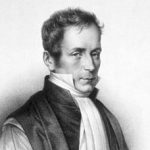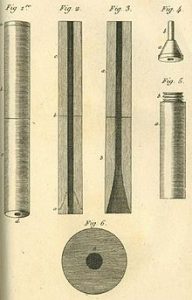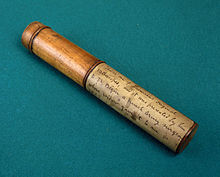 Whenever we make a trip to the emergency room, most of us find ourselves waiting impatiently for the myriad of tests to be returned from the lab to find out what is going on. And, most of us find that annoying, but when you think about how things used to be diagnosed, you might just find yourself rethinking those tests. Imagine a time when something like Pneumonia, Bronchitis, or Tuberculosis might have been “diagnosed” by having you doctor place his ear to your chest to see what you sound like. While I’m no expert, I have a pretty good idea that those three lung diseases would sound fairly similar. So if you had Tuberculosis and your doctor treated you for Bronchitis, how good would you expect your prognosis to be. Not very good, but this was all the doctor could do at that time.
Whenever we make a trip to the emergency room, most of us find ourselves waiting impatiently for the myriad of tests to be returned from the lab to find out what is going on. And, most of us find that annoying, but when you think about how things used to be diagnosed, you might just find yourself rethinking those tests. Imagine a time when something like Pneumonia, Bronchitis, or Tuberculosis might have been “diagnosed” by having you doctor place his ear to your chest to see what you sound like. While I’m no expert, I have a pretty good idea that those three lung diseases would sound fairly similar. So if you had Tuberculosis and your doctor treated you for Bronchitis, how good would you expect your prognosis to be. Not very good, but this was all the doctor could do at that time.
Enter René Théophile Hyacinthe Laennec (February 17, 1781 – August 13, 1826), a young man who’s mother died of tuberculosis when he was five years old. Laennec went to live with his great uncle the Abbé Laennec, who was a priest. As a child, Laennec became ill with Lassitude and repeated instances of Pyrexia. Laennec was also thought to have Asthma. At the age of twelve, he proceeded to Nantes, where his uncle, Guillaime-François Laennec, worked in the faculty of medicine at the university. Laennec was a gifted student. He learned English and German and began his medical studies under his uncle’s direction. Laennec knew first hand that  things like Tuberculosis can kill…he lived that nightmare with his mom. I am fairly certain that there were probably issues with her diagnosis too. After studying medicine, Laennec became a doctor. He also became a lecturer at the Collège de France in 1822 and professor of medicine in 1823. His final appointments were that of head of the medical clinic at the Hôpital de la Charité and professor at the Collège de France.
things like Tuberculosis can kill…he lived that nightmare with his mom. I am fairly certain that there were probably issues with her diagnosis too. After studying medicine, Laennec became a doctor. He also became a lecturer at the Collège de France in 1822 and professor of medicine in 1823. His final appointments were that of head of the medical clinic at the Hôpital de la Charité and professor at the Collège de France.
Laennec’s father was a lawyer, and he thought that being a doctor was a waste of René’s talents. With his father’s discouragement, René had a period of time during which he took long walks in the country, danced, studied Greek and wrote poetry. However, in 1799 he returned to study. Laennec studied medicine at the University of Paris under several famous physicians, including Dupuytren and Jean-Nicolas Corvisart-Desmarets. There he was trained to use sound as a diagnostic aid. Corvisart advocated the re-introduction of percussion during the French Revolution. In 1816, he was consulted by a young woman laboring under general symptoms of diseased heart, and in whose case percussion and the application of the hand were of little avail on account of the great degree of fatness. “The other method just mentioned [direct auscultation] being rendered inadmissible by the age and sex of the patient, I happened to recollect a simple and well-known fact, in acoustics…the great distinctness with which we hear the scratch of a pin at one end of a piece of wood on  applying our ear to the other. Immediately, on this suggestion, I rolled a quire of paper into a kind of cylinder and applied one end of it to the region of the heart and the other to my ear, and was not a little surprised and pleased to find that I could thereby perceive the action of the heart in a manner much more clear and distinct than I had ever been able to do by the immediate application of my ear.” This situation started Laennec’s mind whirling, and before long, he had developed a simplistic version of what we now are all very familiar…the stethoscope. Ironically, like his mother, Laennec died of Tuberculosis on August 13, 1826. While I’m sure medicine had vastly improved during his lifetime, there was still no significant help for Tuberculosis.
applying our ear to the other. Immediately, on this suggestion, I rolled a quire of paper into a kind of cylinder and applied one end of it to the region of the heart and the other to my ear, and was not a little surprised and pleased to find that I could thereby perceive the action of the heart in a manner much more clear and distinct than I had ever been able to do by the immediate application of my ear.” This situation started Laennec’s mind whirling, and before long, he had developed a simplistic version of what we now are all very familiar…the stethoscope. Ironically, like his mother, Laennec died of Tuberculosis on August 13, 1826. While I’m sure medicine had vastly improved during his lifetime, there was still no significant help for Tuberculosis.


Leave a Reply